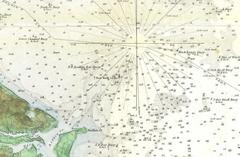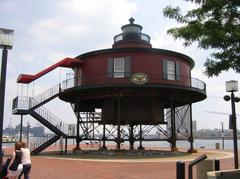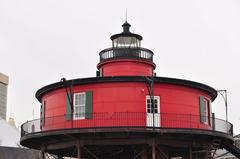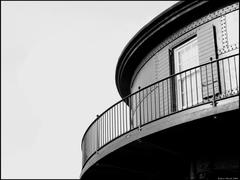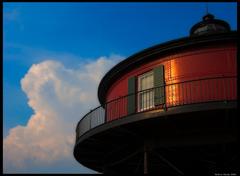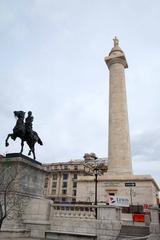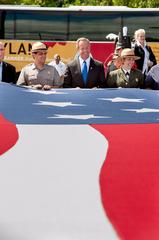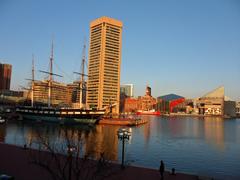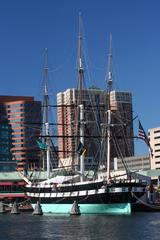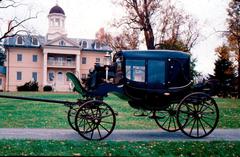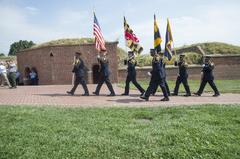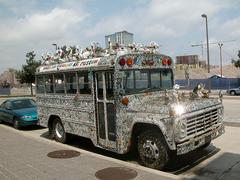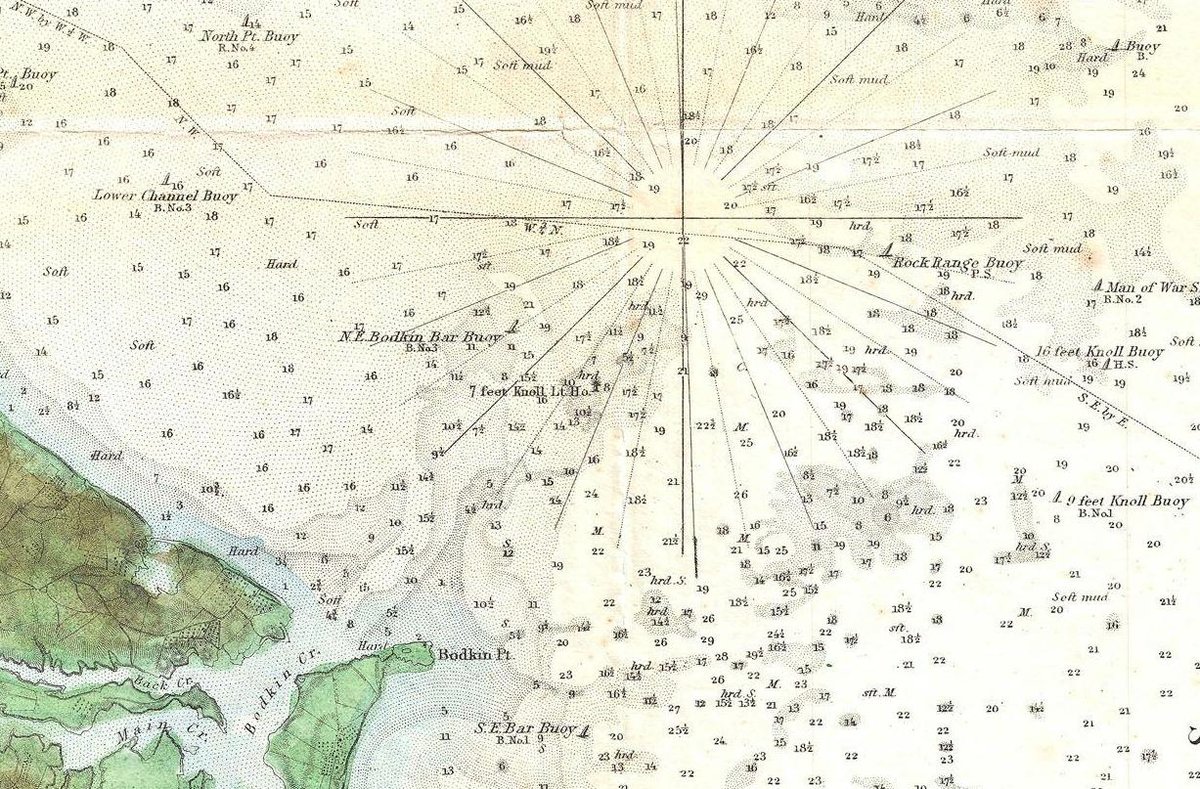
Seven Foot Knoll Lighthouse Visiting Guide: Hours, Tickets, and Historical Insights
Published Date: 01/08/2024
Introduction to Seven Foot Knoll Lighthouse
The Seven Foot Knoll Lighthouse, an iconic maritime beacon, stands as a testament to Baltimore’s rich nautical history. Constructed in 1855, it is the oldest screw-pile lighthouse in Maryland and has played a pivotal role in guiding ships safely into Baltimore Harbor. Its original location was on a rocky shoal known as Seven Foot Knoll at the mouth of the Patapsco River, a critical point for navigation into the harbor (Wikipedia). The lighthouse was built by Murray and Hazelhurst of Baltimore at a cost of $43,000, using prefabricated parts that were transported and assembled on-site, a revolutionary construction method at the time. The structure’s design, featuring a gallery deck, a keeper’s house, and a light beacon with a 4th order Fresnel lens, epitomizes mid-19th-century maritime engineering (Lighthouse Digest).
The Seven Foot Knoll Lighthouse is not just an architectural marvel but also a cultural icon. It was manned by dedicated keepers who braved isolation and challenging conditions to ensure the beacon’s light guided mariners safely. Over the years, technological advancements rendered manual lighthouse operations obsolete, leading to its automation in 1949 and subsequent disrepair. However, the lighthouse was saved from demolition and relocated to Baltimore’s Inner Harbor in 1988, where it now stands as part of the Historic Ships in Baltimore museum (Historic Ships). This guide provides comprehensive visitor information, including tickets, visiting hours, travel tips, and nearby attractions, ensuring a memorable visit to this historic landmark.
Content Overview
- Introduction
- History of Seven Foot Knoll Lighthouse
- Construction and Early Years
- Operational Challenges and Keeper Life
- Technological Advancements and Automation
- Relocation and Restoration
- Historical Significance and Legacy
- Notable Events and Rescues
- Visitor Information
- Tickets and Opening Hours
- Travel Tips
- Nearby Attractions
- Accessibility
- Special Events and Guided Tours
- Preservation Efforts
- Guided Tours
- Photographic Spots and Views
- FAQ
- Conclusion
- Sources and Further Reading
History of Seven Foot Knoll Lighthouse
Construction and Early Years
The Seven Foot Knoll Lighthouse, constructed in 1855, is the oldest screw-pile lighthouse in Maryland. It was initially installed on a rocky shoal called Seven Foot Knoll at the mouth of the Patapsco River, a crucial location for guiding ships into Baltimore Harbor. The lighthouse was built by Murray and Hazelhurst of Baltimore, MD, at a cost of $43,000, with most parts fabricated in Baltimore and then assembled on-site (Wikipedia).
The structure consists of three main sections: the gallery deck, the house, and the light beacon. The gallery deck was located 9 feet above the average high tide waters, providing a stable platform for the lighthouse. The house, where the keeper and his family lived, sat directly atop the gallery deck. At the top was the light beacon, which housed a 4th order Fresnel lens, visible for 12 nautical miles (Lighthouse Digest).
Operational Challenges and Keeper Life
Life at the Seven Foot Knoll Lighthouse was challenging due to its isolated location. The lighthouse was manned initially by the U.S. Lighthouse Service and later by the U.S. Coast Guard. Keepers had to perform essential but routine tasks, such as lighting the beacon lamp at sundown and maintaining it until sunrise. The beacon lens and lamp required thorough cleaning each morning to ensure they were ready for the next night. In times of fog, the fog bell had to be sounded continuously, requiring the winding of the station’s bell machine every 45 minutes until the fog lifted (Historic Ships).
The lighthouse faced difficulties in retaining keepers due to the demanding nature of the job and the isolation. For instance, Captain Steinhise, who became the keeper in 1919, had a long maritime career before taking up the post. He planned to “Tend Light” until his retirement at age 65 (Lighthouse Digest).
Technological Advancements and Automation
Advancements in technology during the 1930s and 1940s made the manual operation of lighthouses increasingly obsolete. By 1948, the Seven Foot Knoll Lighthouse was decommissioned, and in 1949, it was automated. The automation process led to the lighthouse falling into disrepair, and it was eventually replaced by a modern navigational aid, a skeleton tower (Wikipedia).
Relocation and Restoration
In 1988, the lighthouse was removed from its original location at Seven Foot Knoll and transported to Baltimore’s Inner Harbor. This move was facilitated by a 1000-ton capacity shearleg derrick. The lighthouse was then donated to the city and, on August 22, 1989, it was listed on the National Register of Historic Places (Wikipedia).
The relocation and restoration efforts were supported by the Lady Maryland Foundation (now the Living Classrooms Foundation) and descendants of the Steinhise family. These efforts ensured that the lighthouse was preserved for future generations. Today, it is a part of the Historic Ships in Baltimore museum and is permanently installed at the south end of Pier 5 (Historic Ships).
Historical Significance and Legacy
The Seven Foot Knoll Lighthouse holds significant historical value as one of the oldest Chesapeake lighthouses still in existence. It is a contributing element in the Baltimore National Heritage Area and part of the Historic American Engineering Record. The lighthouse’s design, featuring nine stout steel poles and a cylindrical iron dwelling, represents an important era in maritime navigation technology (Wikipedia).
Throughout its operational years, the lighthouse played a crucial role in ensuring the safe navigation of ships entering Baltimore Harbor. Its beacon, visible for up to 18 miles, warned mariners of the treacherous shoals in the area. The lighthouse also withstood significant natural challenges, including ice damage in 1884 and 1894, which necessitated the piling of 790 cubic yards of riprap around the piles to protect the structure (Wikipedia).
Notable Events and Rescues
The Seven Foot Knoll Lighthouse has been a witness to several notable events, including the devastating hurricane of August 1933. This hurricane, with winds reaching 90 miles per hour, caused significant damage along the Atlantic coast from Cape Cod to Cape Hatteras. The lighthouse, however, stood resilient, continuing to serve its purpose despite the harsh conditions (Lighthouse Digest).
Visitor Information
Tickets and Opening Hours
Visitors can explore the Seven Foot Knoll Lighthouse daily. It is open from 10 AM to 5 PM, and tickets can be purchased at the Historic Ships in Baltimore museum. For current prices and special discounts, visit the Historic Ships website.
Travel Tips
The lighthouse is located at the south end of Pier 5 in Baltimore’s Inner Harbor, easily accessible by public transportation or car. Parking is available nearby, and the area is pedestrian-friendly.
Nearby Attractions
While visiting the Seven Foot Knoll Lighthouse, don’t miss other attractions in Baltimore’s Inner Harbor, such as the National Aquarium, the Maryland Science Center, and the Baltimore Museum of Industry.
Accessibility
The lighthouse and museum strive to be accessible to all visitors. However, due to its historic structure, some areas may have limited accessibility. It is recommended to check with the museum staff for specific accessibility information.
Special Events and Guided Tours
Preservation Efforts
The ongoing maintenance and restoration of the Seven Foot Knoll Lighthouse are managed by the Historic Ships in Baltimore museum. The museum’s dedicated Maintenance & Restoration staff, along with a corps of volunteers, work tirelessly to ensure that this national treasure survives for future generations. These efforts include regular updates and restorations to maintain the lighthouse’s structural integrity and historical authenticity (Historic Ships).
Guided Tours
Guided tours are available and offer a deeper insight into the history and significance of the lighthouse. These tours are led by knowledgeable guides who share fascinating stories and facts about the lighthouse’s past.
Photographic Spots and Views
The Seven Foot Knoll Lighthouse offers picturesque views of Baltimore Harbor, making it a favorite spot for photographers. Capture the stunning waterfront scenery and the historic charm of the lighthouse from various vantage points around Pier 5.
FAQ
What are the visiting hours for Seven Foot Knoll Lighthouse?
The lighthouse is open daily from 10 AM to 5 PM.
How much are tickets for Seven Foot Knoll Lighthouse?
Ticket prices vary, and it is best to check the Historic Ships website for the latest information.
Is the lighthouse accessible to everyone?
While efforts are made to ensure accessibility, some areas of the historic structure may have limitations. Contact the museum for specific details.
Conclusion
The Seven Foot Knoll Lighthouse stands as a testament to the rich maritime history of the Chesapeake Bay and the enduring legacy of lighthouse keepers who dedicated their lives to ensuring the safety of mariners. Its preservation and continued public engagement highlight the importance of maintaining historical landmarks for future generations to appreciate and learn from. Plan your visit today and immerse yourself in the fascinating history of this iconic Baltimore landmark.
Sources and Further Reading
- Wikipedia (n.d.). Seven Foot Knoll Light. Retrieved from https://en.wikipedia.org/wiki/Seven_Foot_Knoll_Light
- Lighthouse Digest (n.d.). Seven Foot Knoll Lighthouse. Retrieved from http://www.lighthousedigest.com/Digest/StoryPage.cfm?StoryKey=3762
- Historic Ships (n.d.). Seven Foot Knoll Lighthouse. Retrieved from https://historicships.org/explore/sevenfootknoll-lighthouse
- Lighthouse Friends (n.d.). Seven Foot Knoll Lighthouse. Retrieved from https://www.lighthousefriends.com/light.asp?ID=419
